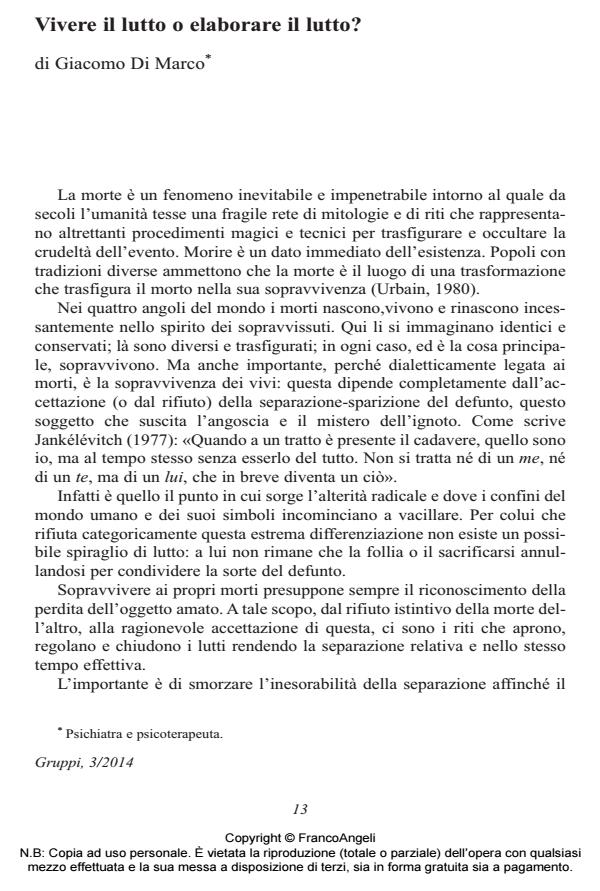Experiencing grief or working through grief?
Journal title GRUPPI
Author/s Giacomo Di Marco
Publishing Year 2015 Issue 2014/3
Language Italian Pages 12 P. 13-24 File size 80 KB
DOI 10.3280/GRU2014-003003
DOI is like a bar code for intellectual property: to have more infomation
click here
Below, you can see the article first page
If you want to buy this article in PDF format, you can do it, following the instructions to buy download credits

FrancoAngeli is member of Publishers International Linking Association, Inc (PILA), a not-for-profit association which run the CrossRef service enabling links to and from online scholarly content.
The author offers reflection on the question in the title of the article, exploring the psychological, sociological and conceptual dimension of grief. The abuse of the concept of "working through" grief is criticized, as it often ends up being prescribed forcedly. In lieu of "working through" grief, the author values "going through" grief: this is the only way to trigger the ability to turn emptiness into absence, thus allowing the individual to recreate a painful feeling, but at the same time to regain the pleasure of feeling alive.
Keywords: Death, grief, working through grief, loss, depression, bonds
- Big Ray: un'esperienza di lutto privata (del gruppo…) Francesco Rizzo, in GRUPPI 1/2024 pp.197
DOI: 10.3280/gruoa1-2022oa17972
Giacomo Di Marco, Vivere il lutto o elaborare il lutto? in "GRUPPI" 3/2014, pp 13-24, DOI: 10.3280/GRU2014-003003